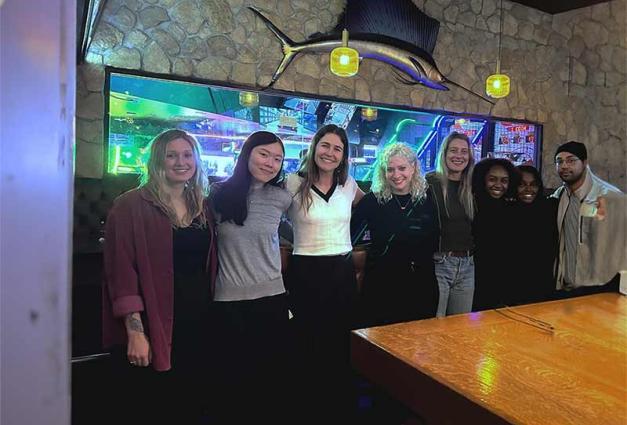As a graduate student, giving symposium talks are crucial to professional development and scholarly progress. These talks are often where the most current and exciting work in the field is being shared with the community, much ahead of when the data will make it into the pages of a scientific journal. At symposia, you also receive feedback from a roomful of people who study the same or similar topics, or are deeply interested in it, which can result in some deeply insightful and generative comments.
While senior scholars with a published scholarly record may regularly receive symposia invitations, this is relatively less common for graduate students, especially if they haven't yet published in that area of research. One way to work around this is to organize your own symposium! This way you can also be the chair/co-chair—another line on the CV. Also, according to SPSP conference acceptance rates, symposia have a higher rate of acceptance than single-presenter oral submissions.
Reaching Out to Potential Speakers
First, develop a broad theme for your symposium and put together potential researchers who might be a good fit. Potential ways to do this include pulling from recent literature, reaching out to your or your advisor's broader research network, or even posting on social media to solicit interested speakers with data relevant to your theme. Depending on the conference guidelines, you will need a total of 3-5 speakers (including yourself).
In your invitation, include a few lines on the broad theme of your symposium and a brief overview of the data you're planning to present. Allow a week or two for invited speakers to respond, so that you can reach out to other speakers in the event that they are unavailable. Note that SPSP allows first/presenting authors to submit only one single presenter submission, so some scholars may have already committed to another symposium (a workaround to this could be reaching out a little early, like a month or two ahead of time).
Putting Together Your Submission
Once a speaker has accepted, request an abstract of their presentation. In addition to preparing their own talk abstract, the symposium chair also prepares a symposium abstract—an integrative summary of sorts introducing the symposium theme and tying together the speakers' individual topics. Give yourself at least a week to do this, and account for it when asking speakers to provide their abstract before a certain date. Don't forget to check out instructions and submission guides (if available) before you submit, so you have all the information you will need. Some conferences (like SPSP) will also publish evaluation criteria for symposia, which can be a handy tool when putting together your submission abstract.
At the Conference
If your symposium is accepted, yay! At the conference, don't be afraid to invite your fellow speakers to a celebratory post-symposium hang out. As a graduate student, chairing a symposium can be an excellent opportunity to build relationships with other scholars in your area of research. More often than not, you'll also end up thinking deeply and in generative ways with people who are just as passionate about the same things as you.
Looking for a first-person perspective from a grad student symposium chair? Check out this symposia Q&A with then-graduate student & SPSPGSC Chair Hannah Moshontz here!
Note: Special thanks to Hanh Annie Vu, fifth-year PhD student at Rutgers University-Newark and past SPSPGSC Chair for sharing her insights for this article.




